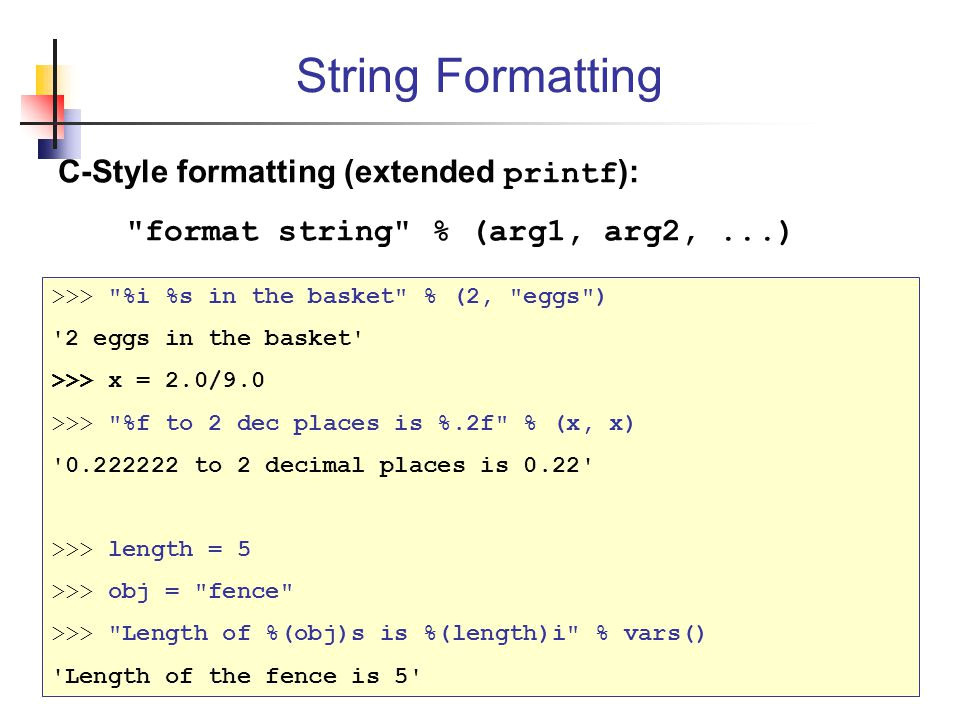Python String Template
Python String Template - Web templates are meant to be simpler than the the usual string formatting, at the cost of expressiveness. For a better understanding of these topics, you'll require some basic knowledge on how to work with classes and regular expressions. Web template strings provide simpler string substitutions as described in pep 292. The format uses placeholder names formed by $ with valid python identifiers (alphanumeric characters and underscores). Web python currently provides two methods of string interpolation: Python currently supports a string substitution syntax based on c's printf() '%' formatting character.
It provides a powerful set of features for customizing how strings are templated, allowing us to perform complex substitutions and. Setting up the project environment. In this case, python’s standard library includes the string module, which provides support for. Python currently supports a string substitution syntax based on c's printf() '%' formatting character. The format uses placeholder names formed by $ with valid python identifiers (alphanumeric characters and underscores).
Python currently supports a string substitution syntax based on c's printf() '%' formatting character. Setting up the project environment. We'll then have a look at how we can change the way our templates can substitute data into strings. The ‘%’ operator for strings. In this case, python’s standard library includes the string module, which provides support for.
The ‘%’ operator for strings. Web templates are meant to be simpler than the the usual string formatting, at the cost of expressiveness. Web in this tutorial, you'll learn about the main tools for string formatting in python, as well as their strengths and weaknesses. This allows users to customize their applications without having to alter the application. Python’s template.
Web the template class available in the string module enables the use of advanced and more expressive way of templating strings. Python’s template string class provides a way for simple string substitution, wherein the template fields are substituted with suitable replacement strings provided by the user. Web in this tutorial, you'll learn about the main tools for string formatting in.
Web in this tutorial, you'll learn about the main tools for string formatting in python, as well as their strengths and weaknesses. We'll then have a look at how we can change the way our templates can substitute data into strings. Understanding the python template class Web the template class available in the string module enables the use of advanced.
Setting up the project environment. The ‘%’ operator for strings. This allows users to customize their applications without having to alter the application. Web in the string module, template class allows us to create simplified syntax for output specification. Web templates are meant to be simpler than the the usual string formatting, at the cost of expressiveness.
Python String Template - Setting up the project environment. Understanding the python template class The ‘%’ operator for strings. Web in this article, we'll format strings with python's template class. Web template strings provide a simple and intuitive way to perform string formatting in python. The format uses placeholder names formed by $ with valid python identifiers (alphanumeric characters and underscores).
The format uses placeholder names formed by $ with valid python identifiers (alphanumeric characters and underscores). Web the template class available in the string module enables the use of advanced and more expressive way of templating strings. Web template strings provide simpler string substitutions as described in pep 292. Web templates are meant to be simpler than the the usual string formatting, at the cost of expressiveness. Web template strings provide a simple and intuitive way to perform string formatting in python.
Python’s Template String Class Provides A Way For Simple String Substitution, Wherein The Template Fields Are Substituted With Suitable Replacement Strings Provided By The User.
Before we dive into the code, we need to set up our project environment by installing any necessary packages. The format uses placeholder names formed by $ with valid python identifiers (alphanumeric characters and underscores). It provides a powerful set of features for customizing how strings are templated, allowing us to perform complex substitutions and. Web templates are meant to be simpler than the the usual string formatting, at the cost of expressiveness.
Web Python Template Strings.
Understanding the python template class Web python currently provides two methods of string interpolation: This allows users to customize their applications without having to alter the application. In this case, python’s standard library includes the string module, which provides support for.
We'll Then Have A Look At How We Can Change The Way Our Templates Can Substitute Data Into Strings.
Web in this tutorial, you'll learn about the main tools for string formatting in python, as well as their strengths and weaknesses. Web in this article, we'll format strings with python's template class. Web the template class available in the string module enables the use of advanced and more expressive way of templating strings. Python currently supports a string substitution syntax based on c's printf() '%' formatting character.
Web In The String Module, Template Class Allows Us To Create Simplified Syntax For Output Specification.
Web template strings provide a simple and intuitive way to perform string formatting in python. The ‘%’ operator for strings. Setting up the project environment. For a better understanding of these topics, you'll require some basic knowledge on how to work with classes and regular expressions.




